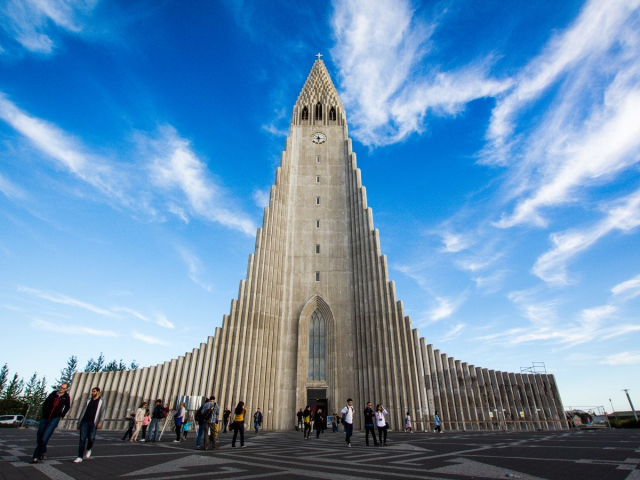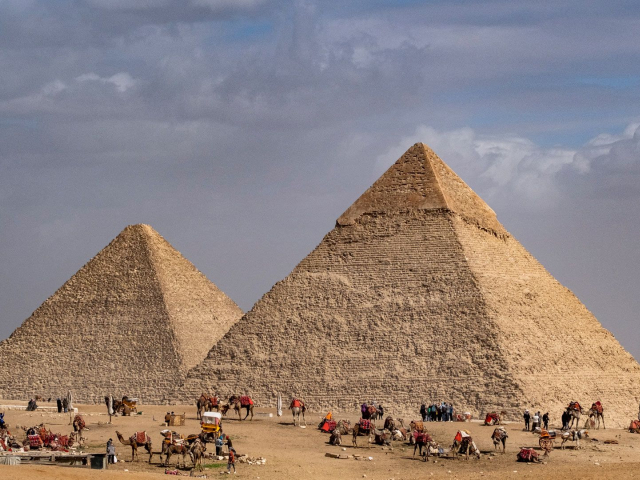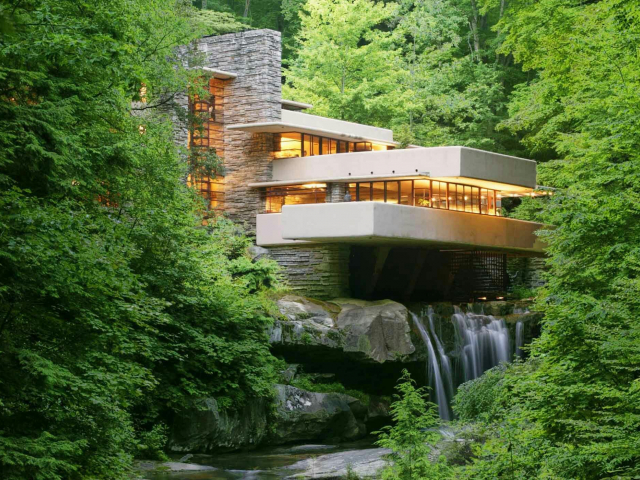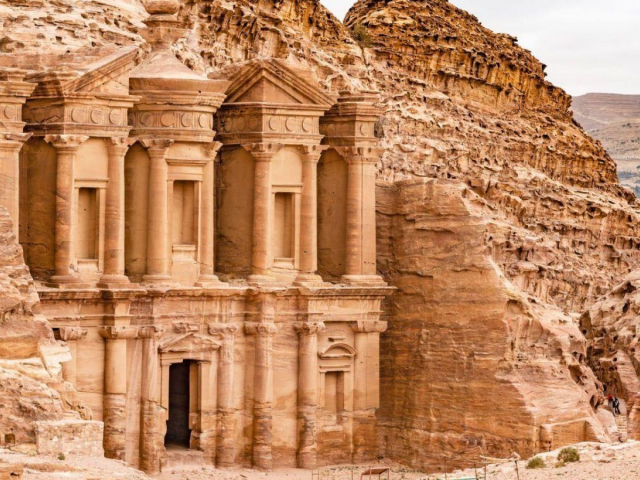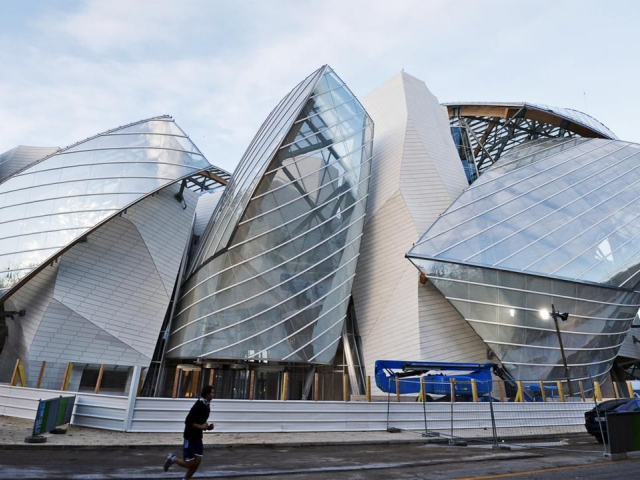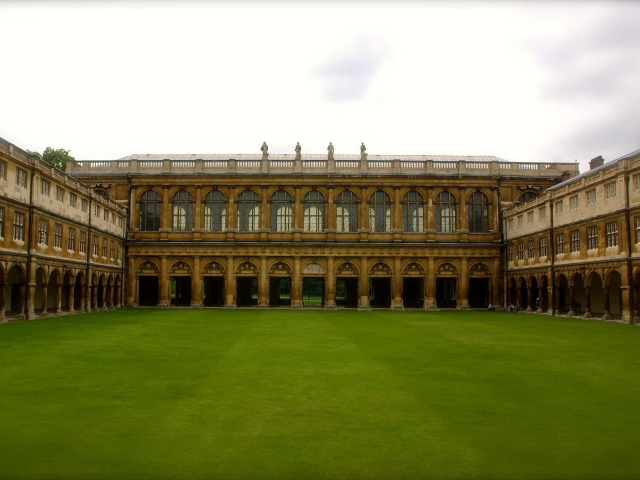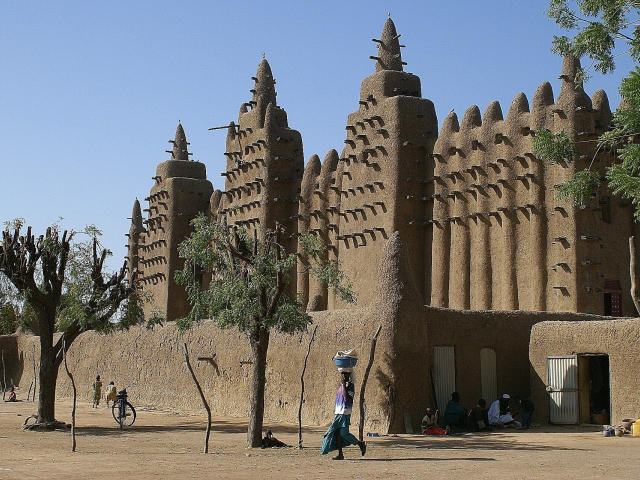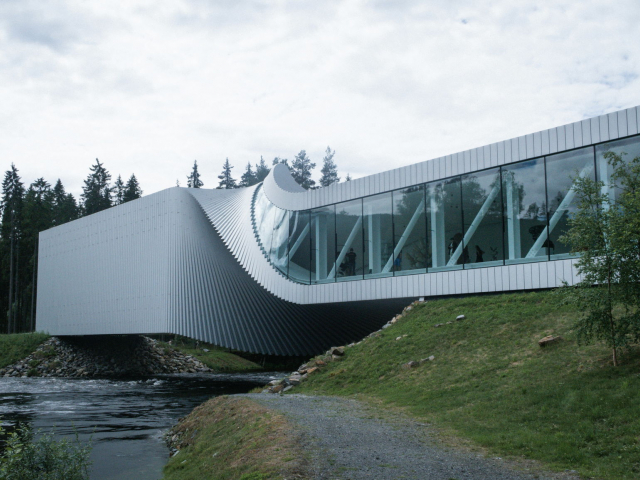Taj Mahal (India)
The Taj Mahal is a white marble mausoleum in Agra, India, widely recognized as one of the greatest symbols of love in history. Commissioned by Mughal Emperor Shah Jahan in memory of his wife Mumtaz Mahal, it was constructed over 22 years, from 1632 to 1653. The architectural ensemble blends Persian, Islamic, and Indian styles: perfect symmetry, a graceful dome, marble inlay, and intricate stone carvings make it visually flawless.
Hallgrímskirkja (Iceland)
Hallgrímskirkja is the largest church in Iceland and one of Reykjavik’s most iconic landmarks. Built between 1945 and 1986, it was designed by architect Guðjón Samúelsson. The facade was inspired by Iceland’s natural forms—cooling lava flows, basalt columns, and the stark northern landscape. The church seems to rise organically from the ground, resembling either a rocket or a natural monolith. Its white concrete exterior emphasizes its striking geometry and harmonizes with Iceland’s dramatic scenery.
Pyramids of Giza (Egypt)
The Pyramids of Giza are among the oldest and most magnificent architectural structures in human history. Built between 2550 and 2490 BCE as tombs for Ancient Egyptian pharaohs, the most famous is the Great Pyramid of Khufu. It continues to impress with its scale, precision, and geometric clarity. Despite lacking modern technology, the pyramids were constructed using ingenious mechanisms like sledges, levers, and inclined planes.
Fallingwater (US)
Fallingwater is one of the most famous residential buildings of the 20th century and a true embodiment of harmony with nature. Designed by architect Frank Lloyd Wright between 1936 and 1939 as a weekend home for the Kaufmann family, it is situated directly above a waterfall in Bear Run Nature Reserve. Its defining feature is the series of cantilevered terraces that seem to grow out of the rock, hovering above flowing water. The interior continues the dialogue with nature, incorporating streambed stones and the ever-present sound of the waterfall.
Ad Deir (Jordan)
Ad Deir is one of the most impressive structures in the ancient city of Petra, Jordan. Carved directly into the rock in the 1st century CE, the monumental building stands 48 meters tall and boasts the tallest facade in Petra. The architecture merges with the natural beauty of pink sandstone, earning the city the nickname The Rose City. Likely used as a temple or ceremonial space, Ad Deir’s strict symmetry, massive columns, and softly carved forms give it a majestic presence that blends seamlessly with the desert landscape.
Louis Vuitton Foundation (France)
The Louis Vuitton Foundation is a contemporary architectural marvel built between 2007 and 2014, designed by the acclaimed architect Frank Gehry. Located in the Bois de Boulogne in Paris, it serves as a center for modern art and cultural initiatives. Its shape resembles a futuristic ship with twelve glass “sails” inspired by 19th-century greenhouses. White “icebergs” between the glass structures accentuate the dynamic nature of the facade.
Trinity College Library (Ireland)
Trinity College Library in Dublin is Ireland’s largest library and one of the most awe-inspiring in the world. Constructed between 1712 and 1732, it houses around 6 million printed works, including the Book of Kells—a masterpiece of medieval manuscript art. The main chamber, known as the Long Room, stretches 65 meters and stuns with its barrel-vaulted ceiling, oak bookcases, and somber, almost monastic atmosphere. Over time, the hall was expanded and gained its iconic Gothic appearance, becoming a symbol of academic architecture.
Great Mosque of Djenné (Mali)
The Great Mosque of Djenné is the largest mud-brick building in the world. Its original version dates back to the 13th century, but the current structure was rebuilt in 1907. Rising above the city like a mirage of sand, the mosque features powerful towers, protrusions, and wooden beams that serve both decorative and structural purposes for annual maintenance. Every year, the people of Djenné gather for the traditional Crépissage festival to recoat the building with a fresh layer of clay.
Nasir al-Mulk Mosque (Iran)
The Nasir al-Mulk Mosque in Shiraz, Iran, is a 19th-century architectural gem built between 1876 and 1888 on commission from a prominent local aristocrat. Known as the “Pink Mosque” for its delicate ceramic hues and the unique play of light, the mosque’s exterior features intricate pink-and-blue tilework and exquisite patterns crafted by master artisans. The true magic lies in the prayer hall, where morning sunlight filters through stained glass windows, transforming the space into a living mosaic of light and color.
Twist Gallery (Norway)
The Twist is a unique art gallery and pedestrian bridge across the Randselva River in Norway. Constructed between 2016 and 2019 by the architectural firm BIG, the building features a 90-degree twisted structure that literally rotates around its axis to connect the riverbanks. Inside, the space is divided into three zones with varying atmospheres—from a bright hall with panoramic windows to a darker pavilion with narrow overhead lighting. The building impresses not only with its form but with how it becomes part of the natural landscape.
-
Grand Choice
Contest by
InstaForexInstaForex always strives to help you
fulfill your biggest dreams.JOIN CONTEST -
Chancy DepositDeposit your account with $3,000 and get $4000 more!
In July we raffle $4000 within the Chancy Deposit campaign!
Get a chance to win by depositing $3,000 to a trading account. Having fulfilled this condition, you become a campaign participant.JOIN CONTEST -
Trade Wise, Win DeviceTop up your account with at least $500, sign up for the contest, and get a chance to win mobile devices.JOIN CONTEST






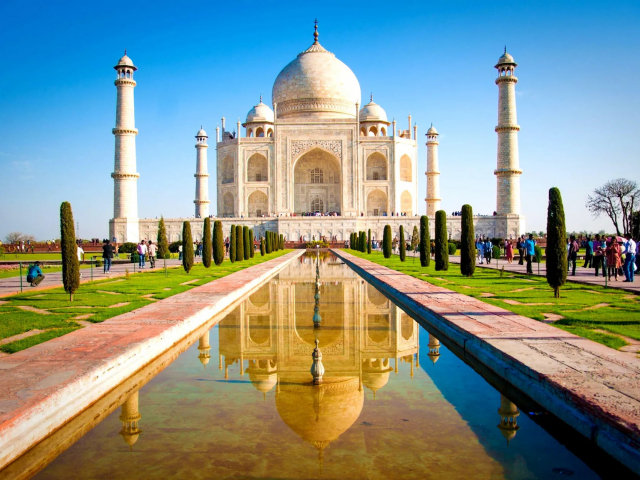
 742
742 10
10